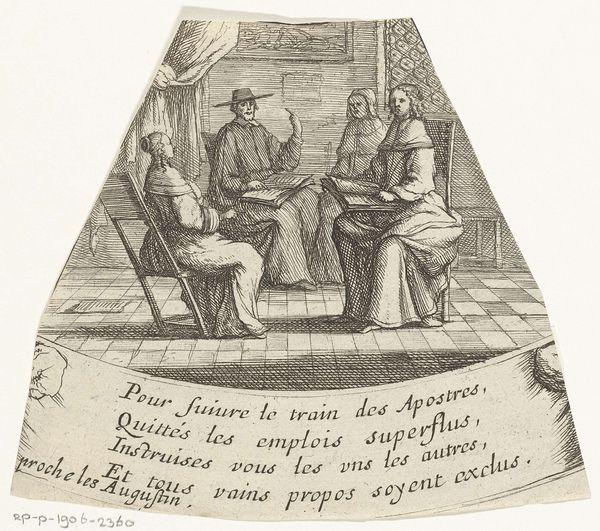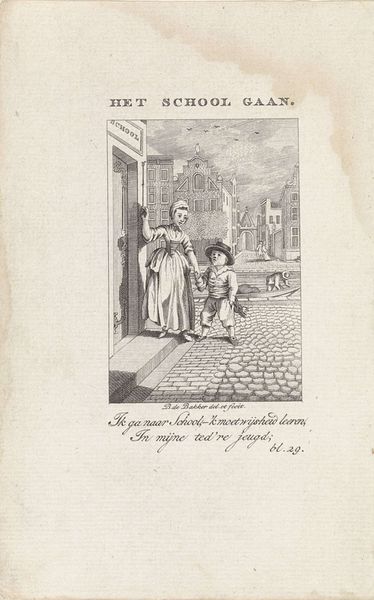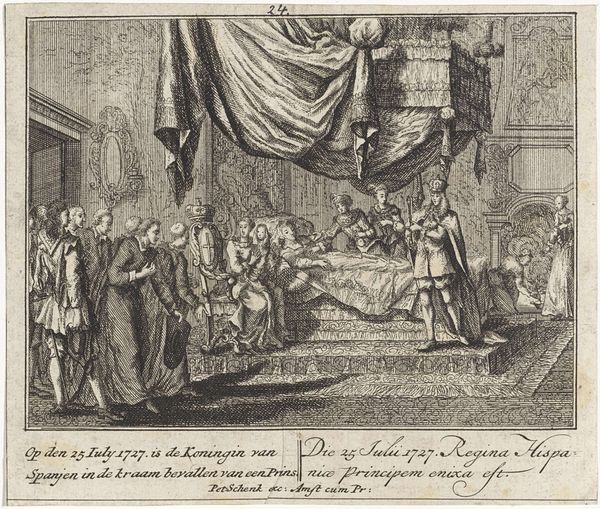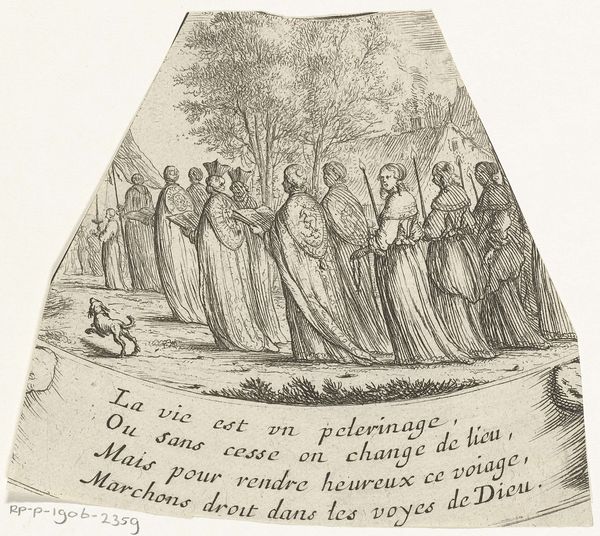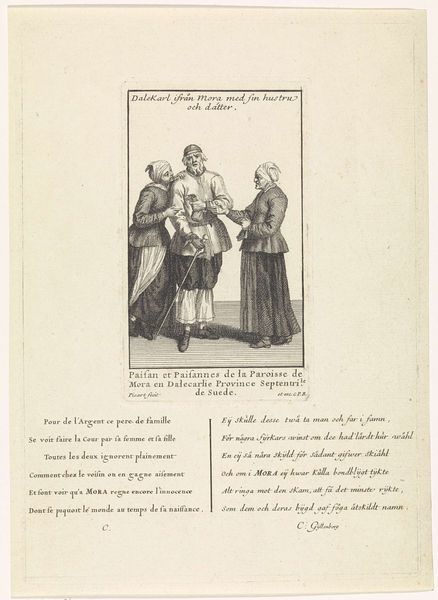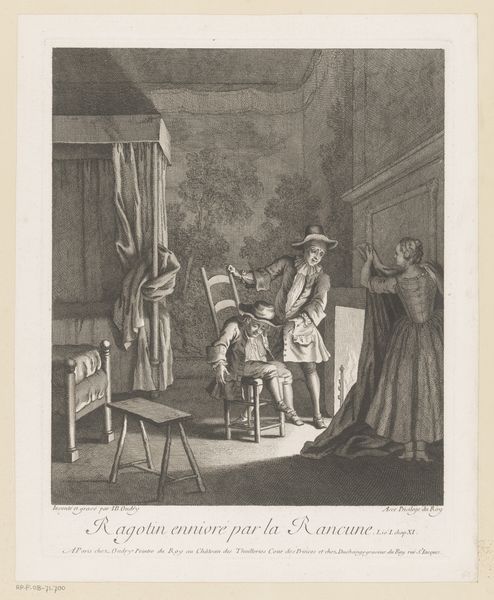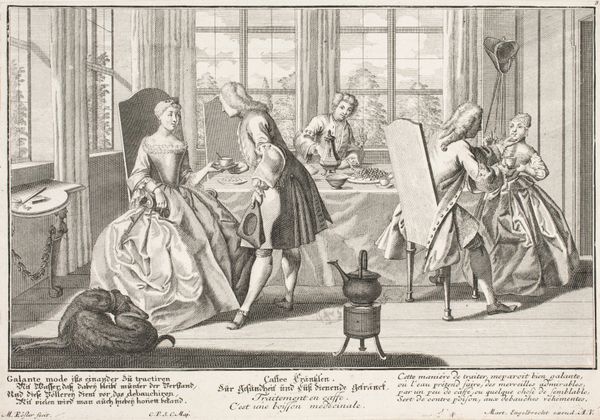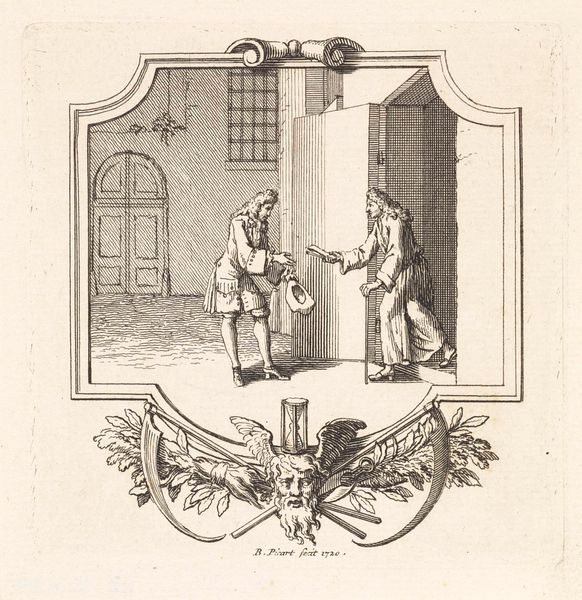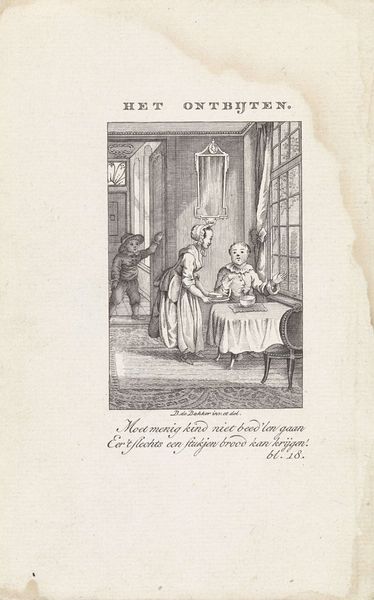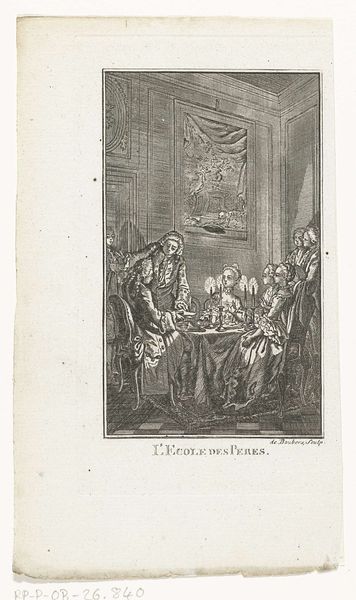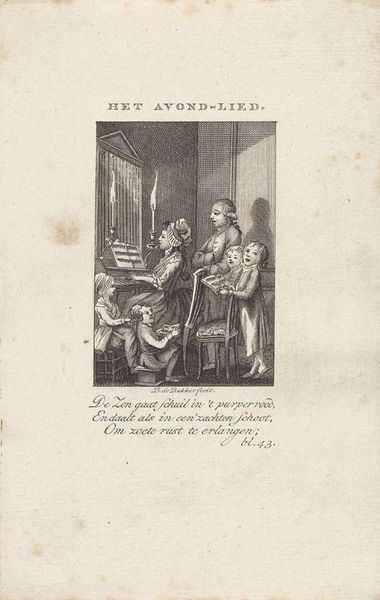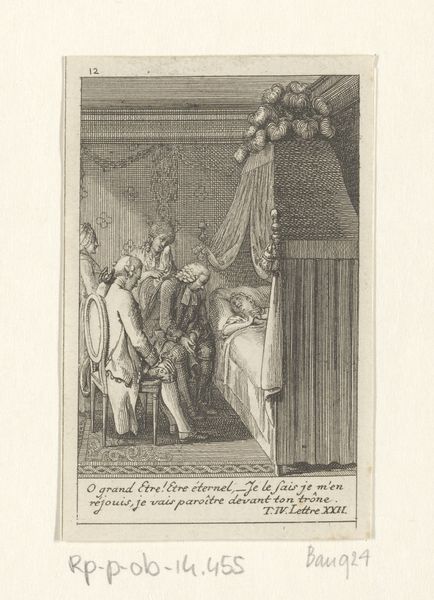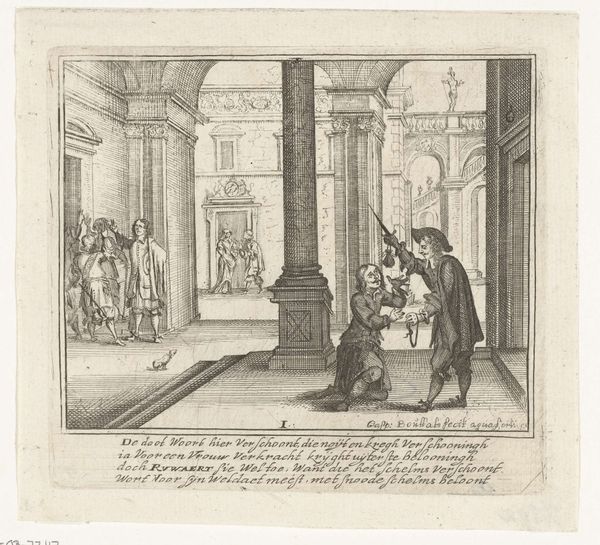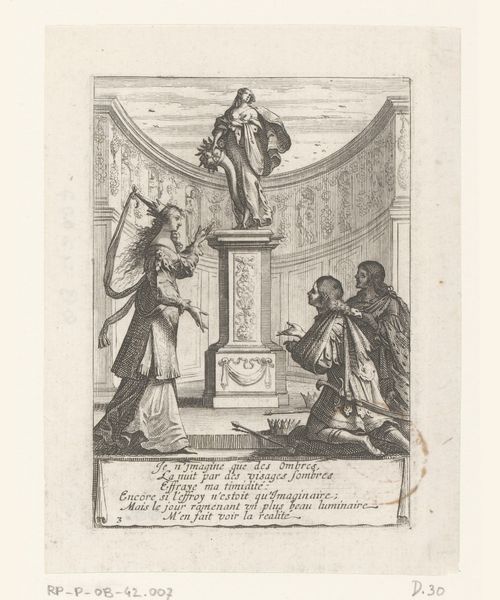
drawing, etching
#
drawing
#
narrative-art
#
baroque
#
etching
#
pencil sketch
#
genre-painting
Dimensions: height 114 mm, width 133 mm
Copyright: Rijks Museum: Open Domain
Editor: This is "Zieken bezoeken" or "Visiting the Sick" by Albert Flamen, an etching from around the mid-17th century. It looks like a scene inside a hospital or perhaps a charitable institution. The figures seem somber but industrious. How do you interpret this work within its historical context? Curator: Precisely. Flamen presents us with more than just a scene; he offers a commentary on societal values. The 17th century was a period marked by significant social stratification, and the rise of institutions aimed at caring for the less fortunate played a crucial role in shaping the public perception of charity and social responsibility. The Baroque style here, with its detailed rendering of the interior and figures, underscores the gravity of the subject matter. Note the architectural space—does it evoke a sense of communal care or of institutional control, do you think? Editor: I see what you mean. It’s interesting how the architectural detail and the cross evoke religion and thus the church, yet it feels removed because of the emerging institution…almost like two types of “care”. Was this intended to celebrate altruism, or perhaps subtly critique the conditions that necessitated such places? Curator: It’s a valid question. Etchings like these often served multiple purposes. On one hand, they showcased acts of benevolence, reinforcing social norms and promoting charitable giving. On the other hand, by depicting scenes of illness and poverty, they subtly highlighted the existing social inequalities, raising awareness, and, perhaps, even prompting some level of social reform. We might even consider who the audience was for such an image. Editor: That makes me think more about the rise of institutions versus smaller charitable work. I never considered that dichotomy and how art participates. Curator: It’s a fascinating field! Next time, consider how patronage might influence such imagery.
Comments
No comments
Be the first to comment and join the conversation on the ultimate creative platform.
